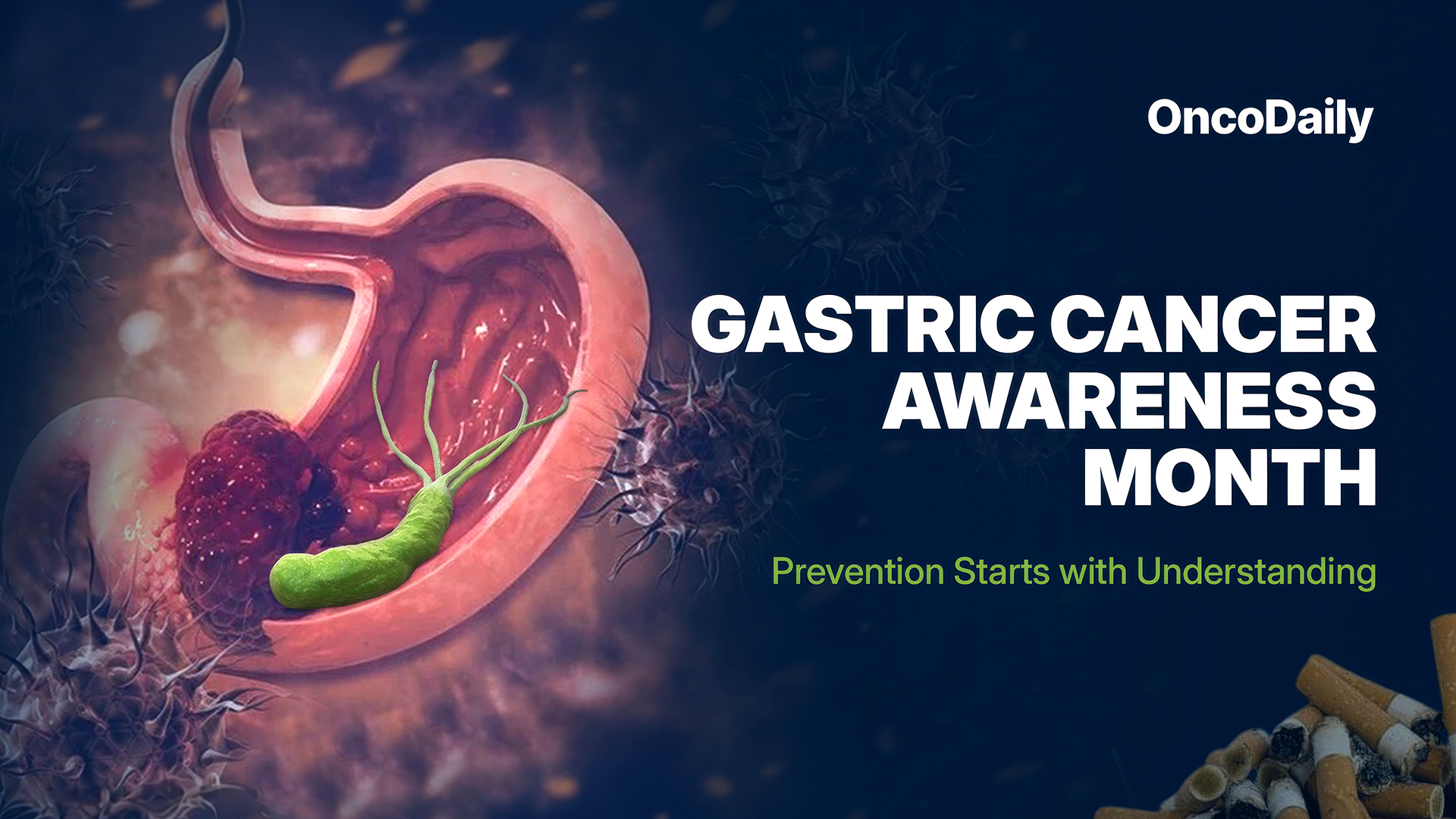November is Gastric Cancer Awareness Month, a vital global observance dedicated to raising public knowledge about gastric cancer, commonly known as stomach cancer. Each year, approximately 30,000 new cases are diagnosed in the United States alone, with over 10,000 deaths anticipated in 2025. Globally, gastric cancer remains one of the leading causes of cancer-related deaths.
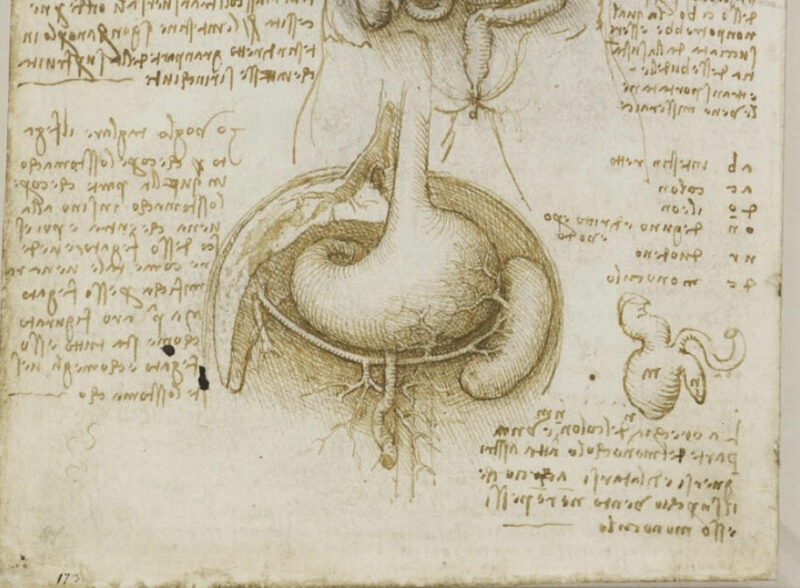
Leonardo da Vinci – “Studies of the Digestive System” (c. 1508–1510)
This awareness month emphasizes the critical importance of early detection and prevention, since gastric cancer often develops with subtle or no symptoms in its early stages, leading to late diagnoses. Through education on risk factors, symptoms, and screening, the campaign aims to empower individuals and healthcare providers to identify the disease sooner improving treatment outcomes and survival rates.
What is Gastric Cancer?
Gastric cancer, also known as stomach cancer, primarily refers to malignant tumors originating in the lining of the stomach. The most common type is adenocarcinoma, accounting for over 90% of cases, which begins in the glandular cells of the stomach lining.
Key risk factors for gastric cancer include infection with Helicobacter pylori bacteria, which causes chronic inflammation; dietary factors such as high salt intake and smoked or processed foods; smoking; a family history or genetic predisposition; increasing age; and geographic prevalence, with higher rates in East Asia, Eastern Europe, and parts of South America.
Early-stage gastric cancer symptoms are often vague or absent, leading to delayed diagnosis. Typical early symptoms may include persistent indigestion or heartburn, bloating after meals, mild nausea, loss of appetite, and feeling full after eating small amounts. Because these signs mirror common digestive issues, many cases go unnoticed until the cancer advances, causing more serious symptoms such as unintentional weight loss, abdominal pain, vomiting (sometimes with blood), difficulty swallowing, anemia, and black or bloody stools.
The subtle early symptoms highlight why awareness and vigilance are critical to diagnosing gastric cancer at a treatable stage and improving patient outcomes.
For More Details You Can Also Read Stomach Cancer: Symptoms and Causes, Types, Diagnosis and Treatment by OncoDaily
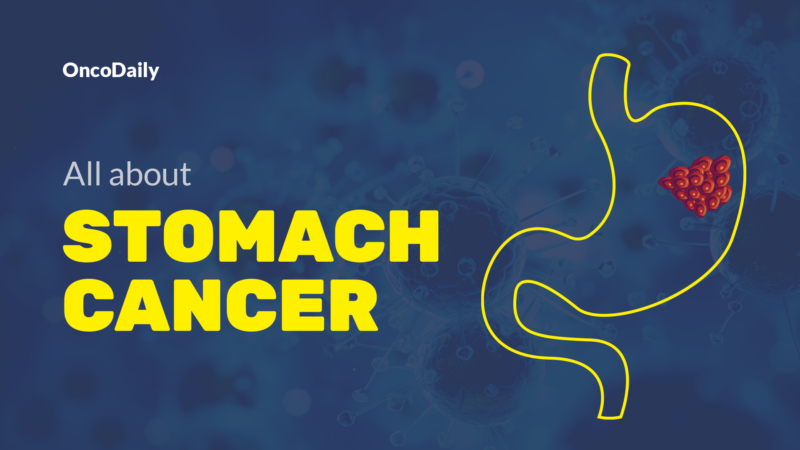
From 76% to 7%: The Survival Gap That Awareness Can Close
According to the American Cancer Society, using SEER data from 2015–2021, the overall 5-year relative survival rate for stomach cancer in the United States is approximately 37.9%. Survival outcomes vary significantly by stage at diagnosis, with localized disease confined to the stomach showing about a 76.5% 5-year survival rate, compared with 37.2% for regional disease that has spread to nearby lymph nodes or tissues, and only 7.5% for distant metastatic disease. Notably, only around 30% of gastric cancers are diagnosed at a localized stage, where survival is substantially higher.
Globally, gastric cancer remains a major cause of cancer mortality, with an estimated 15.6 million future cases projected among younger birth cohorts worldwide. A large proportion of these cases are linked to Helicobacter pylori infection, with up to 76% considered preventable through targeted public health interventions.
You Can Also Read CLDN18.2 and PD-L1 Expression Reveal Distinct Molecular Pathways and Therapeutic Implications in Advanced Gastric and GEJ Cancer by OncoDaily
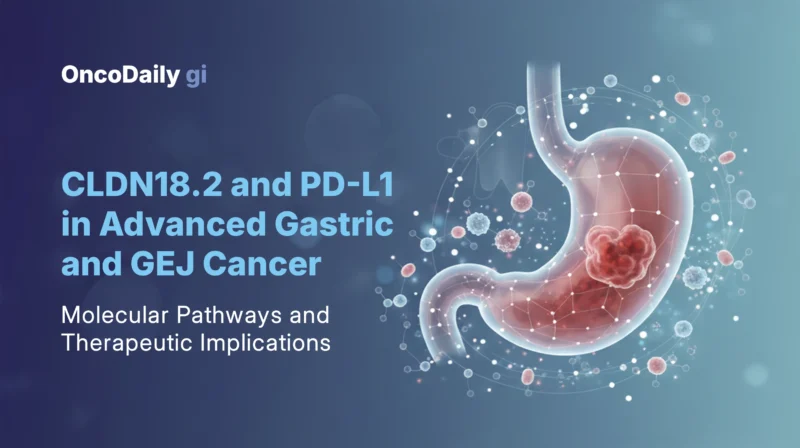
Importance of Awareness and Early Detection
According to the World Health Organization (WHO), most gastric cancers worldwide are still diagnosed at an advanced stage simply because early symptoms are vague and easily overlooked. Raising awareness helps shift that pattern. When people understand what early warning signs look like and when to seek care, more cancers are found while still curable. Early detection is not just helpful it is the single most powerful tool for improving survival.
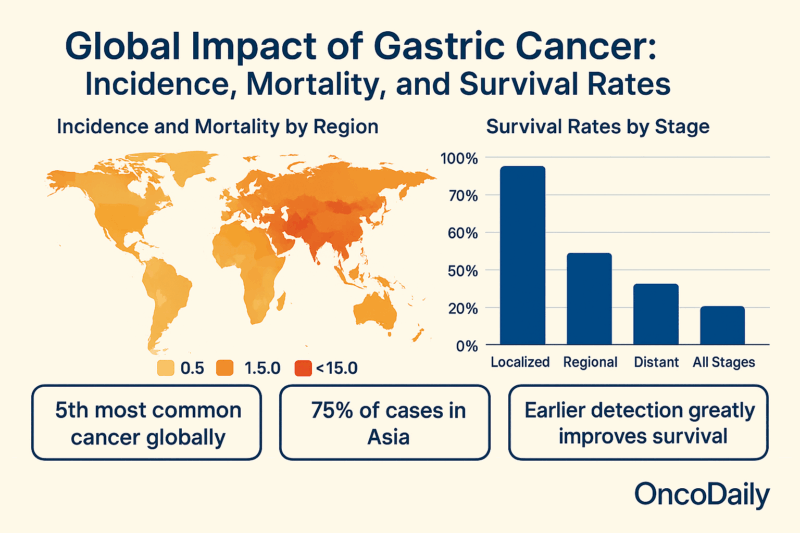
Screening Recommendations and Who’s at Risk
WHO highlights several high-risk groups who benefit most from screening: adults over 40–50 years in countries with high incidence, individuals with chronic H. pylori infection, people with a first-degree relative with gastric cancer, and patients with precancerous stomach conditions such as chronic atrophic gastritis or intestinal metaplasia. In regions where gastric cancer is common such as East Asia, Eastern Europe, and parts of Latin America—mass endoscopic screening beginning around age 40 has dramatically improved early detection. Identifying who is at elevated risk ensures that screening is targeted, effective, and lifesaving.
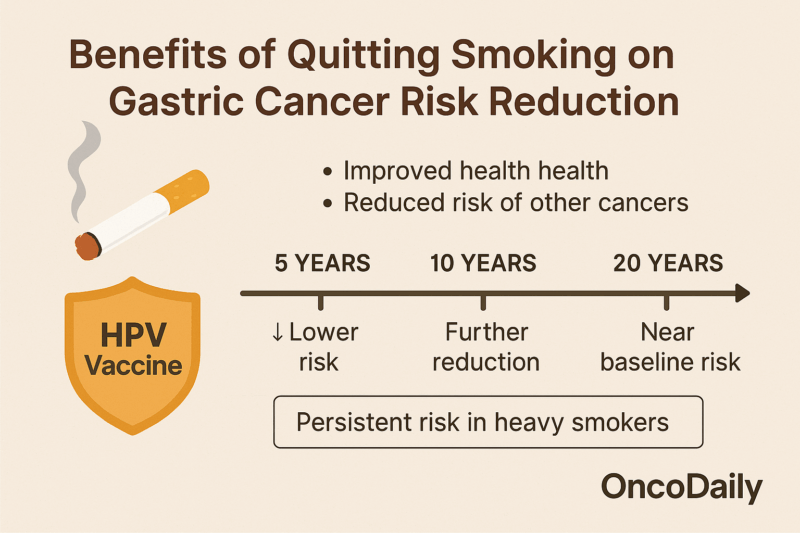
We hope you’re already following OncoDaily’s GI Special Platform on LinkedIn and X — your dedicated space for expert insights, clinical updates, and breakthroughs in gastrointestinal oncology.

The Role of Healthcare Providers, Caregivers, and Patients
WHO emphasizes that early detection only works when everyone stays attentive.
Clinicians must take persistent stomach symptoms seriously, especially in adults over 50, those with long-standing reflux, unexplained anemia, early satiety, or unintentional weight loss. Caregivers often notice appetite changes or new discomfort before patients do and play a key role in encouraging evaluation.
And patients themselves must speak up persistent stomach pain is not “normal,” especially after age 45–50. Recognizing symptoms early, even when subtle, can make the difference between localized disease and metastatic spread.
You Can Also Read Gastric Cancer and Smoking — What Are the Shocking Real Risks? by OncoDaily
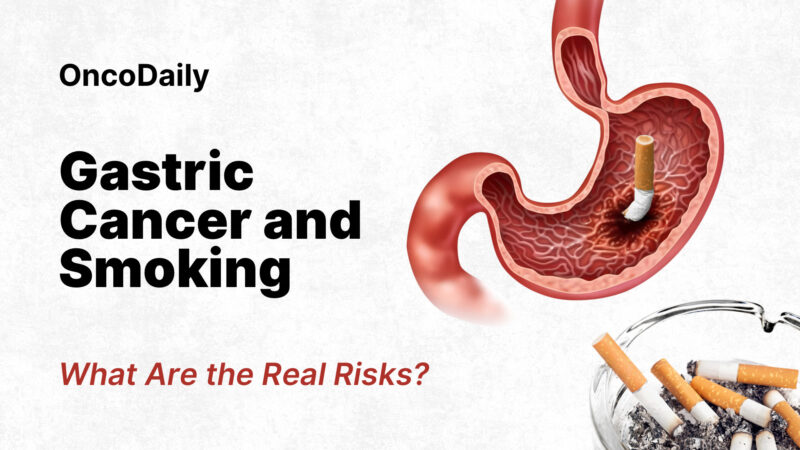
Written by Aharon Tsaturyan, MD, Editor at OncoDaily Intelligence Unit
FAQ
What are the early symptoms of gastric (stomach) cancer?
People frequently search for subtle signs such as persistent indigestion, bloating, nausea, early fullness, mild stomach pain, and unexplained weight loss.
Who is most at risk for gastric cancer?
High-risk groups include those with H. pylori infection, a family history of stomach cancer, chronic gastritis, stomach ulcers, smoking history, high-salt diets, and people over age 50.
Can gastric cancer be prevented?
Many users search whether lifestyle changes, H. pylori treatment, diet adjustments, and smoking cessation help reduce risk. (Yes a large portion is preventable.)
What is the survival rate for stomach cancer?
This is one of the top-searched questions. Survival depends on stage: early-stage detection dramatically improves outcomes.
How can gastric cancer be detected early?
People search for screening methods, especially endoscopy, tests for H. pylori, and when to see a doctor if symptoms persist.
